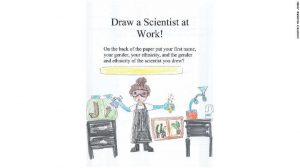LatinaLista — Since so many readers were having difficulty enlarging the infographic on the LL Facebook page, I’ve decided to create a post featuring it.
It really is an interesting snapshot of just how quickly technology has transformed our world. Regardless of the claims that social media isolates people, we now know that’s not the case. At least, not anymore than does watching television in the privacy of our homes.
When social media was first introduced, people had to learn how to use it. Though some took classes, the vast majority of people sat themselves in front of their computers and learned what Facebook, MySpace and blogging was all about.
As I write in my book A Simple Start to Blogging with Social Media:
The most commonly cited social media platforms in the news today are: Facebook, MySpace, Twitter, and LinkedIn. The speed at which each of these platforms was adopted by your neighbors, kids and business associates is mind boggling when it’s considered that the most widely used platform, Facebook, has only been around for seven years.
But the bigger surprise, aside from how quickly people have adopted this new technology, is who is using it.
For example, Facebook, when it started in 2004, was only open to college students. They would befriend one another and build up their “Friends List,” a.k.a., social network. Over time, high schoolers and anyone over the age of 13 were allowed to create accounts on Facebook.
Today, chances are your grandma is your “friend” on Facebook. She probably was persuaded to get on when she realized she was missing out on seeing the latest family pictures or reading the newest adventures of the grandkids.
What is usually forgotten is that there is always a learning curve, especially for the older generation, when it comes to new technology. Social media usage highlighted that more than ever.
It was, and still is, natural that people will spend a fair amount of time on their own learning the new technology and getting comfortable with it. But once that happens, the speed of acceleration to more complex and advanced practices happens quickly.
We see that with this new chapter in social media — mobile.
It can’t be forgotten that social media has gone mobile — the next evolutionary milestone — and people are accessing their networks from their cars, cafes, doctor offices, schools, theaters, etc. But rather than further isolating us, I see the next step in social media history as one where we blend more effectively the online and offline worlds.
It’s already happening.
Whether people are using FourSquare to alert their networks where they are or Pinterest to share the sights they see as they’re out and about or have opted to livestream their activities, the list of examples of how both worlds are melding is leading not only to the future of social media but the fulfillment of, what I call, social technology.
Ironically, though Latinos lag behind in STEM careers and graduation rates — for both high school and college — Latinos do hold the distinction of being early adopters of today’s mobile technology. More Latinos use their smartphones/tablets to network online, read the news, listen to music and watch movies.
Given the fact that Latinos will be a majority in this country sooner rather than later, this ability to embrace technology, use it effectively and get creative in how to use it speaks volumes for a segment of the population that is underperforming in academics.
The true key to Latino academic success in the future will be how to integrate technology more seamlessly into learning. It’s fair to say that the process has started but it has a long way to go.
In the meantime, one thing is certain — social technology will evolve, as will its users.
![A History of Social Media [Infographic] - Infographic A History of Social Media [Infographic] - Infographic](https://netdna.copyblogger.com/images/history_of_social_media.jpg)
Like this infographic? Get more content marketing tips from Copyblogger.





Comment(1)
Latina Lista
The infographic is embedded in this post